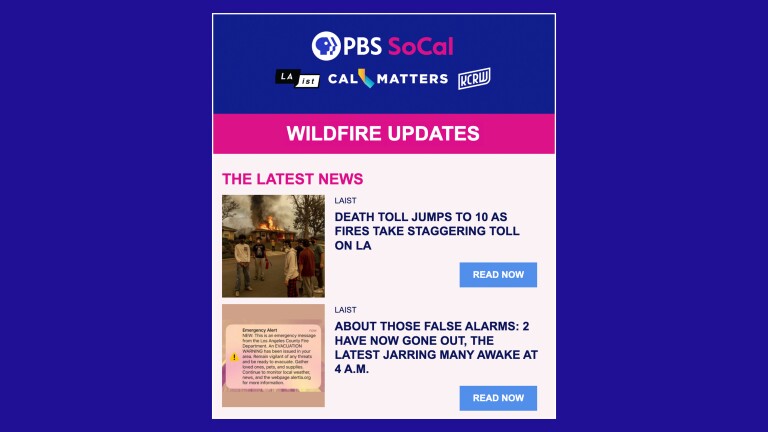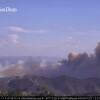Angelenos in Unstable Housing More Likely to Shelter Wildfire Evacuees, According to Survey

This article was originally published April 10, 2025 on laist.com.
Los Angeles County residents living in unstable housing conditions were almost twice as likely as their securely housed counterparts to open their doors to friends and family members who were displaced during January’s wildfires.
That’s according to results released Thursday from the LABarometer survey, a project of the University of Southern California’s Dornsife Center for Economic and Social Research.
During February and March, the researchers put a series of fire-related questions to a panel of 1,360 county households. The respondents represented a diverse cross-section of L.A. County in terms of race, income, geography and housing stability, researchers said.
Among the respondents who said they personally knew someone who lost a home in the fires, those identified as “unstably housed” were more likely to say they let an evacuee stay with them (16%) than those who had stable housing (9%).
As wildfires impact our communities, your trusted public media organizations have come together to deliver free, reliable, and essential news and updates.

Kyla Thomas, a USC sociologist and director of LABarometer, called that finding ”striking.”
“If you think about people who are in housing-insecure situations, those households are more likely to be overcrowded already,” Thomas said. “What you're seeing is the most vulnerable residents taking on additional housing burdens to support those more severely impacted.”
Some evacuees are still living in unstable homes
The researchers found that across the survey’s questions, responses from people who said they were stably housed often differed significantly from the responses of unstably housed people, defined as those who said they worried about losing their housing “often” or “very often.”
Some of those doubled-up living arrangements were only temporary, according to the survey. But it found that unstably housed respondents were more likely to still be housing evacuees (6%) months after the fires were put out compared with stably housed respondents (2%).
The survey also found unstably housed respondents were more likely to say they lost income or savings because of the fires (14%) than stably housed respondents (5%).
Thomas said the responses point toward increased struggles for people who were already more likely to have missed past rent payments and be spending a high percentage of their income on housing.
Will post-fire eviction protections keep people housed?
State and local eviction protections were put in place for renters affected by the fires.
Shortly after the fires broke out, Gov. Gavin Newsom signed an executive order providing temporary safeguards against eviction to tenants who took in roommates not authorized under a lease, if those new occupants were displaced by the fires.
The L.A. County Board of Supervisors also gave tenants a legal defense against eviction if they can’t pay rent on time because of financial impacts of the wildfires. Landlords could still file an eviction, but the county protection would allow tenants who notified their landlords about post-fire hardships to fight it in court.
Thomas said it will take time to know whether those protections have succeeded at stabilizing Angelenos in an already expensive housing market turbocharged by the fires.
LABarometer has been running since March 2020, when the COVID-19 pandemic sent similar shockwaves through L.A.’s rental housing market.
“We saw during COVID that those eviction protections made a big difference, but then once they were lifted, we started to see an uptick in evictions,” Thomas said.
She added that future LABarometer surveys will continue to examine the effects of the fires.
“People are maybe protected now,” Thomas said. “But when those protections go away, is that when they finally experience the full impact the wildfires have had on them?”

